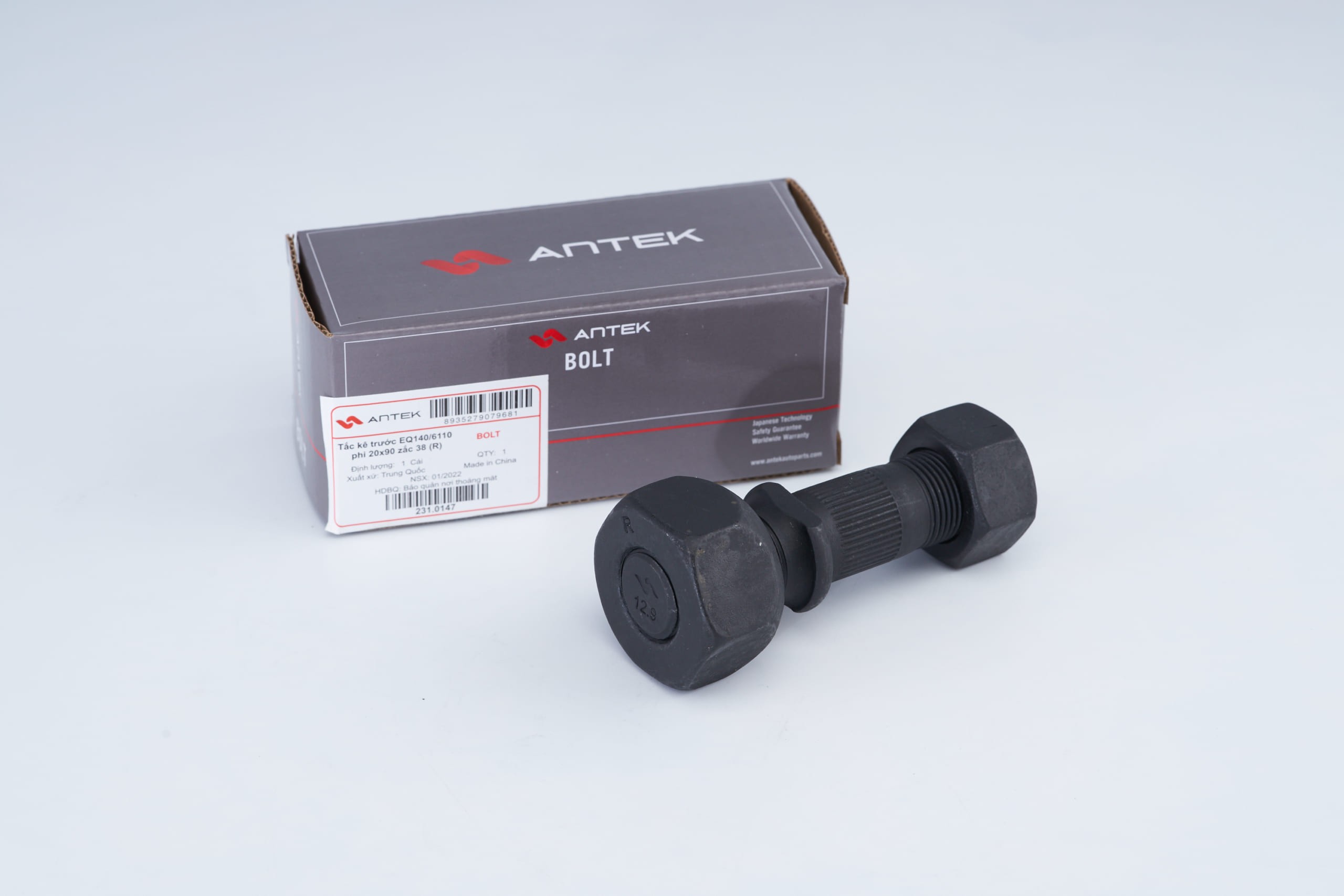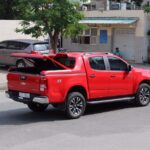Truck wheel studs are crucial components in a vehicle’s undercarriage system, responsible for securing wheels to the axle and withstanding operational forces. This article provides a comprehensive overview of truck wheel studs, including their structure, function, common types, and signs of damage.
 Diagram illustrating the components of a truck wheel stud
Diagram illustrating the components of a truck wheel stud
What Are Truck Wheel Studs? And Their Functions?
Truck wheel studs, also known as wheel bolts, are mechanical fasteners that connect the wheel to the vehicle’s axle. Designed to withstand significant impact forces, they ensure wheels remain securely attached during vehicle operation. Wheel studs play a pivotal role in ensuring truck safety and stability.
Main functions of truck wheel studs:
- Wheel Fixation: Studs keep the wheel in its correct position on the axle, preventing loosening or detachment.
- Load Bearing: They bear the entire weight of the vehicle and cargo exerted on the wheels.
- Ensuring Stable Operation: Studs contribute to smooth, stable, and safe vehicle operation, especially at high speeds or on uneven terrain.
Structure of Truck Wheel Studs
Truck wheel studs are typically manufactured from high-strength alloy steel, offering durability, load resistance, and wear resistance. They consist of three main parts:
- Stud Body: The cylindrical threaded section that screws into the wheel hub.
- Stud Head: The end that interfaces with tightening tools (wrenches, impact guns), available in various shapes: hexagonal, square, round, etc.
- Threads: The helical grooves on the stud body that allow for secure tightening with nuts.
Common Types of Truck Wheel Studs
Truck wheel studs are classified based on several criteria: size, thread type, and manufacturing material. Some common types include:
- By Material: Carbon steel studs, alloy steel studs, stainless steel studs.
- By Size: Available in various sizes depending on the vehicle and wheel type.
- By Thread Type: Coarse thread, fine thread.
Signs of Damaged Truck Wheel Studs
Early detection of damaged wheel studs is crucial for ensuring safe vehicle operation. Common signs include:
- Unusual Noises: Clicking, clanking, or knocking sounds from the wheel area while driving.
- Vehicle Vibration: Strong vehicle vibration during operation, especially at higher speeds.
- Handling Issues: Difficulty steering, loss of control.
Effective Use and Maintenance of Truck Wheel Studs
To ensure optimal stud performance and extended lifespan, consider the following:
- Regular Inspection: Regularly check stud tightness, especially after maintenance.
- Timely Replacement: Replace studs showing signs of wear, rust, or damage.
- Correct Stud Type: Select studs appropriate for the vehicle and wheel type.
- Proper Torque: Avoid over-tightening or under-tightening studs.
- Regular Maintenance: Lubricate studs periodically to prevent seizing or rusting.
Conclusion
Truck wheel studs are small but vital components ensuring vehicle safety and operational efficiency. Understanding wheel studs, their proper use, and maintenance will help extend their lifespan and guarantee driver and cargo safety. Choose quality studs and conduct regular inspections to keep your vehicle operating in optimal condition.
